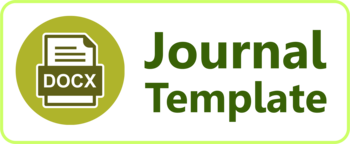ANALISIS KESALAHAN BERBAHASA PADA TATARAN FRASA DALAM PUTUSAN PENGADILAN KASUS TINDAK PIDANA KEJAHATAN TERHADAP NYAWA
DOI:
https://doi.org/10.12928/mms.v4i1.7163Keywords:
Language errors , Court order , Homicide , PhraseAbstract
Court order are a scientific product of the legal process, so there should be no mistakes in writing court order because this can have fatal consequences for the legal process that has been carried out. Phrases as the smallest level in the syntax used to form sentences must be written correctly in a court order to avoid misinterpretation of a court order. This study will describe the various language errors at the phrase level that can be found in court order on homicide act of criminal. This research is a qualitative descriptive study. The data in this study are sentences containing language errors at the phrase level contained in a court order of homicide act of criminal in North Sumatra in 2020. The conclusions in this study are made inductively. Based on the analysis in this study, it can be concluded that there are six types of language errors, namely the influence of regional languages, inappropriate use of prepositions, wording errors, excessive use of elements, errors in the use of superlative forms, and pluralization of plural forms.
References
Abdussamad, Z. (2021). Metode penelitian kualitatif. Makassar: Syakir Media Press.
Ariman, R. & F. Raghib. (2016). Hukum pidana. Malang: Setara Press.
Badan Pusat Statistik (2021). Statistik Kriminal 2021. Jakarta: Badan Pusat Statistik.
Balai Bahasa Provinsi Jawa Tengah. (2010). Kata penunjuk jamak. Diakses pada 27 Desember 2022, dari https://balaibahasajateng.kemdikbud.go.id/2010/08/kata-penunjuk-jamak/.
Chaer, A. & L. Agustina. (2004). Sosiolinguistik. Jakarta: Rineka Cipta.
Kridalaksna. (1986). Kelas kata dalam bahasa Indonesia. Jakarta: Gramedia.
Makarao, M. T. (2004). Pokok-pokok hukum acara perdata. Jakarta: Rineka Cipta.
Mulyadi, L. (2014). Seraut wajah putusan hakim dalam hukum acara pidana Indonesia: perspektif, teoritis, praktik, teknik membuat dan permasalahnya. Bandung: Citra Aditya Bakti.
Markhamah dan Atiqa. (2014). Analisis kesalahan dan karakteristik bentuk pasif. Surakarta: Muhammadiyah University Pers.
Parera, J.D. (2006). Pintar berbahasa Indonesia SLTP Kelas 2. Jakarta: Balai Pustaka.
Prafantya, B. (2011). Perbandingan tingkat komparatif dan superlatif adjektiva dalam bahasa Inggris dan bahasa Indonesia. Jurnal Sosioteknologi, 24 (10), 1197-1207.
Setyawati, N. (2017). Analisis kesalahan berbahasa Indonesia: teori dan praktik (Cetakan Kedelapan). Surakarta: Yuma Pustaka.
Sudjana, N. & Ibrahim. (1989). Penelitian kualitatif dan kuantitatif. Bandung: Sinar Baru.
Suhardi. (2013). Sintaksis. Yogyakarta: UNY Press.
Suharjo, S. (2016). Analisis kesalahan bahasa pada putusan Mahkamah Konstitusi Nomor 4/Puu-XI/2013. Jurnal Retorika, 2 (1), 174-191.
Syafar, D. N. (2016). Negasi dalam bahasa Indonesia dan bahasa Inggris. Jurnal Arbitrer, 3 (1), 1-11.
Downloads
Published
Issue
Section
License
Copyright (c) 2023 Ririn Sulistyowati

This work is licensed under a Creative Commons Attribution-ShareAlike 4.0 International License.
License and Copyright Agreement
In submitting the manuscript to the journal, the authors certify that:
- They are authorized by their co-authors to enter into these arrangements.
- The work described has not been formally published before, except in the form of an abstract or as part of a published lecture, review, thesis, or overlay journal.
- That it is not under consideration for publication elsewhere,
- That its publication has been approved by all the author(s) and by the responsible authorities tacitly or explicitly of the institutes where the work has been carried out.
- They secure the right to reproduce any material that has already been published or copyrighted elsewhere.
- They agree to the following license and copyright agreement.
Copyright
Authors who publish with Mimesis agree to the following terms:
- Authors retain copyright and grant the journal right of first publication with the work simultaneously licensed under a Creative Commons Attribution License (CC BY-SA 4.0) that allows others to share the work with an acknowledgment of the work's authorship and initial publication in this journal.
- Authors are able to enter into separate, additional contractual arrangements for the non-exclusive distribution of the journal's published version of the work (e.g., post it to an institutional repository or publish it in a book), with an acknowledgment of its initial publication in this journal.
- Authors are permitted and encouraged to post their work online (e.g., in institutional repositories or on their website) prior to and during the submission process, as it can lead to productive exchanges, as well as earlier and greater citation of published work.











